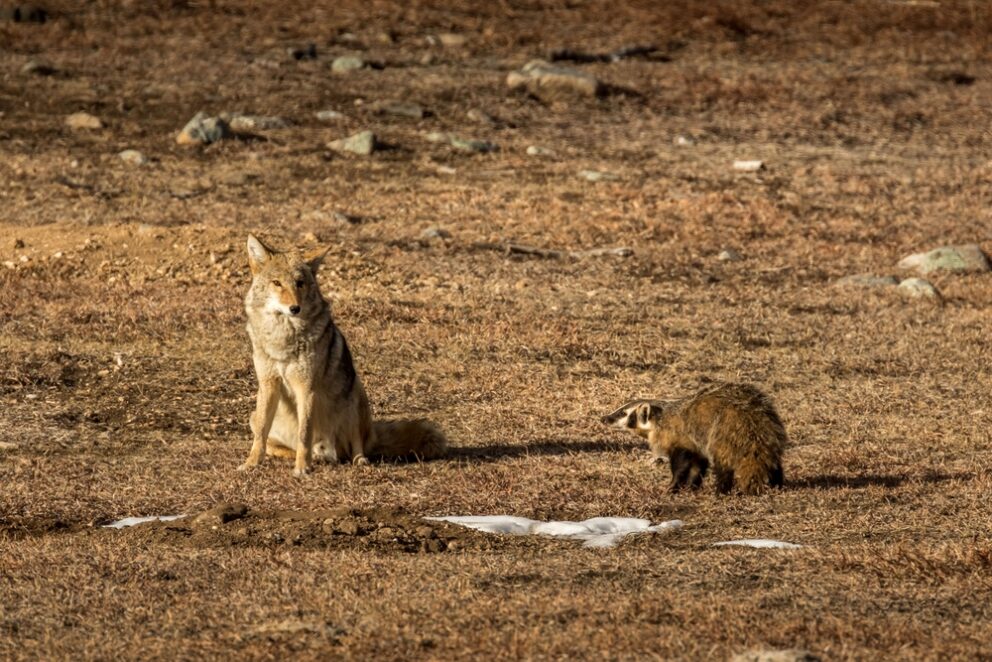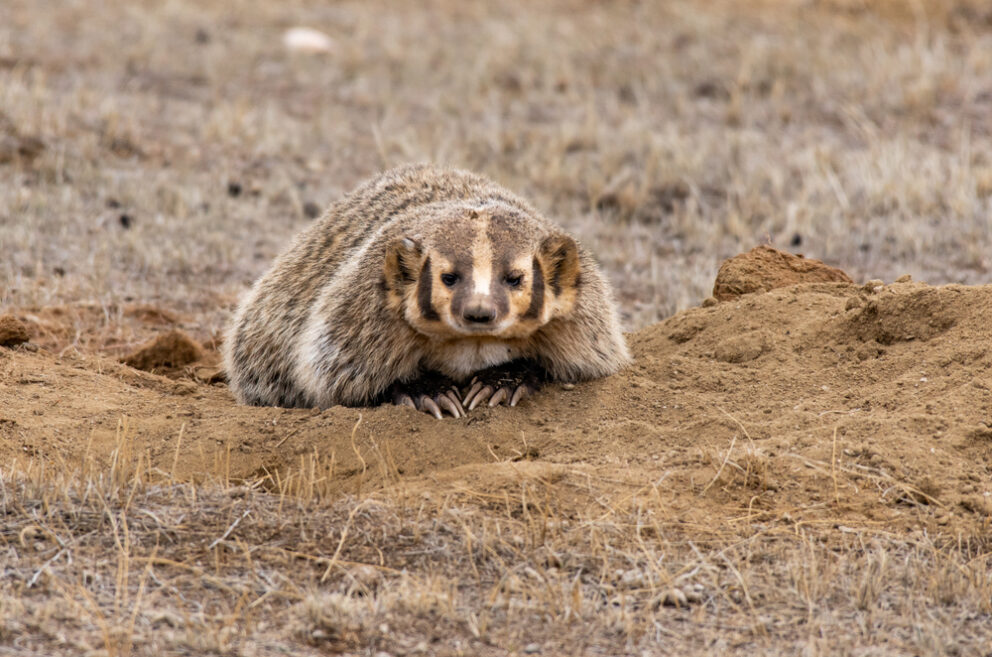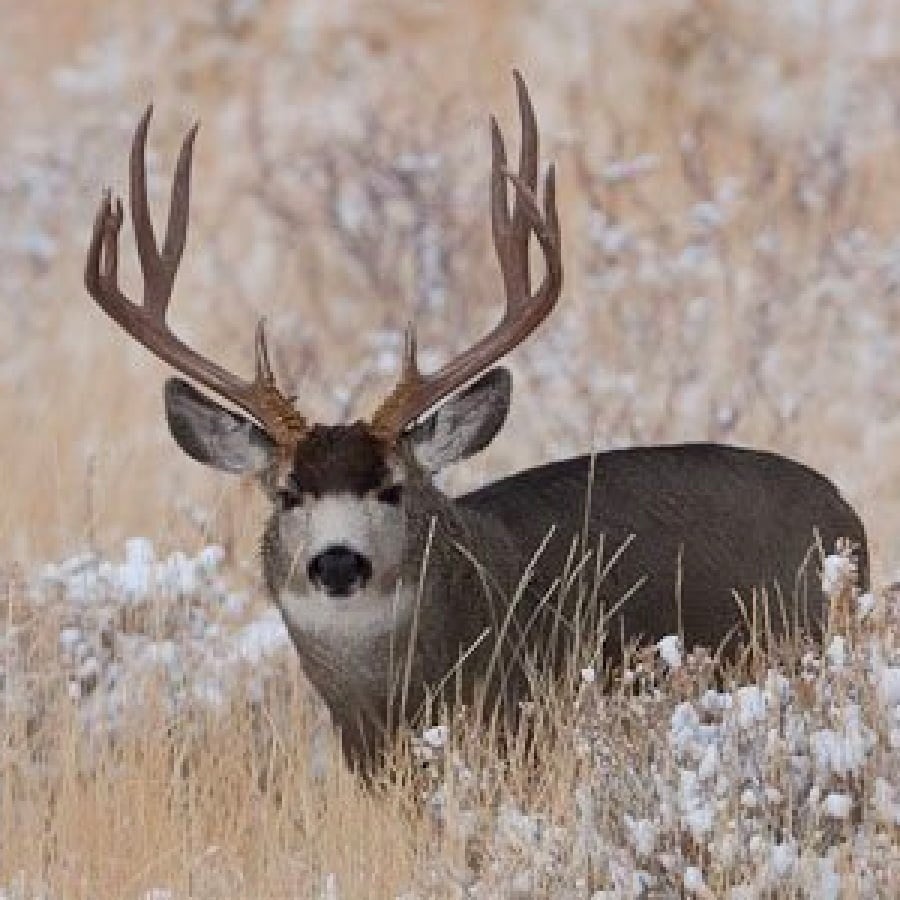- SCIENTIFIC NAME
- Taxidea taxus
- CLASSIFICATION
- Mammal
- LIFE SPAN
- 3-5 Years
- SIZE
- 20-32” | 10-24lbs
- STATE CONSERVATION STATUS
-
- Unprotected
- FEDERAL CONSERVATION STATUS
- Least Concern
- GAME STATUS
- Non-Game
- GAME TYPE
- None
- Washoe
- Humboldt
- Pershing
- Churchill
- Mineral
- Lyon
- Douglas
- Carson City
- Storey
- Elko
- Lander
- Eureka
- White Pine
- Esmeralda
- Nye
- Lincoln
- Clark
Habitat & Range
American Badgers range from southern Canada to central Mexico. They can be found throughout Nevada.
- Agricultural Lands
- Alpine forests of the Sierras
- Grasslands
Threats
- Habitat Degradation
- Habitat Loss
Natural History
American Badgers are carnivores, meaning they only eat meat. Their diet consists of small animals such as ground squirrels, mice, gophers, birds, and insects. They are solitary animals preferring to live by themselves. They are territorial and will defend their space from other Badgers and predators. They are nocturnal animals, only coming out at night to forage. Badgers spend the day in their burrows keeping cool and conserving energy.
During the winter, Badgers will undergo torpor, a period of time from a few hours to a few days where they suspend movement and mental stimulation but are still able to react to disturbances. Their breeding season is in late September and females will have 1-5 offspring. During their breeding seasons Badgers will form pairs, typically a male will breed with the same female.
They are well known for their large front claws which are used to dig. In addition, they have very powerful front limbs making them capable of digging very fast. Even though they have short limbs, they can run up to 19 mph.
Fun Facts














